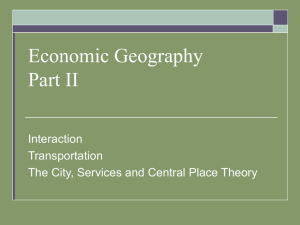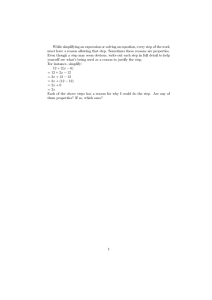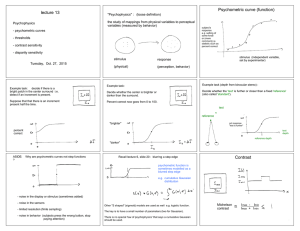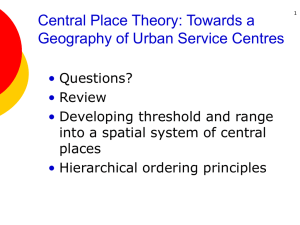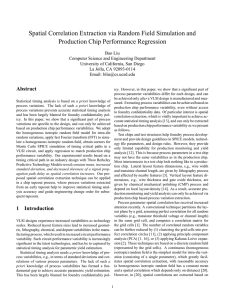Urban Service Centres • Cities as centres of... Control
advertisement
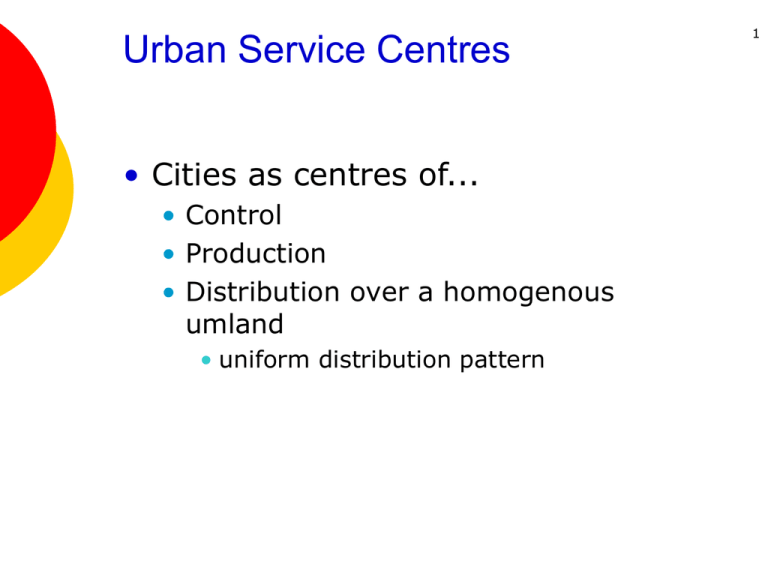
Urban Service Centres • Cities as centres of... • Control • Production • Distribution over a homogenous umland • uniform distribution pattern 1 Central Place Theory: Explaining the Geography of Urban Service Centres • • • • • Model: noun, verb, adjective Spatial model Abstraction Simplifying assumptions Theoretical basis for urban (Central Place) hierarchies • Walter Christaller The Location of Central Places in Southern Germany (1933) 2 3 Simplifying assumptions: • Land Area • • • • • isotropic surface (flat / homogeneous) unbounded plain no variation in raw material distribution equal ease of movement in all directions transportation costs proportional to distance 4 Simplifying assumptions: • Population • Homogeneously distributed • Homogeneous demand • Tastes/preferences • Spending • Behaviour • Rational Economic Persons • aware of alternatives • producers=profit-maximizers • consumers=optimizing • perfectly competitive market 5 Market and Demand • Market is a point location • Distributes its goods within a market area. • Demand for good: • Market price (fob market) •+ • Cost of transport (to & from) market Demand Distance Real Price per Unit 6 Q Demanded Market location FLIP 7 Q Demanded FLIP Q Demanded Spatial Demand Cone Demand Distance Distance Market location Increasing real price RANGE: The spatial extent of demand before demand drops to zero Distance 8 Distance Demand = zero Threshold Market Threshold Range Range 9 Important definitions: • Threshold: • minimum DEMAND (volume of sales) needed for a business to stay in operation (and make a “normal” profit). • Range: • maximum distance over which a good can be sold from point P (i.e. where real price is low enough that people will travel to market to buy it) • Profit = R - T • Threshold and range is the spatial basis for profit 10 Implications of the RANGE Area of Extra Profit Min area required to stay in business (normal profits) Isotropic surface R M T ? Unmet demand for same good or service
